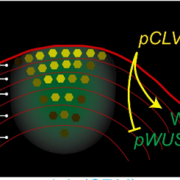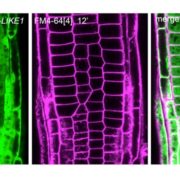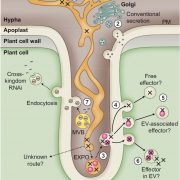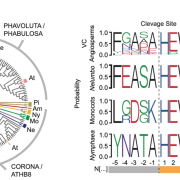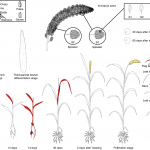Development and cell cycle dynamics of the root apical meristem in the fern Ceratopteris richardii (bioRxiv)
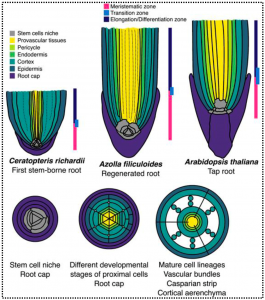
Roots are essential organs for nutrient and water uptake and have been extensively investigated in angiosperms. Many studies suggest that roots originated through convergent evolution in vascular plants, a clade that includes seed plants and ferns. Besides Arabidopsis and crops, little is known about root development in extant early-divergent tracheophytes such as ferns, which represent an essential lineage to obtain a more complete picture of plant morphological diversity. Seeking to solve this, Aragón-Raygoza and colleagues monitored embryogenesis, root meristem specification and stem-borne roots (SBRs) growth in Ceratopteris richardii (the “Arabidopsis of the fern world”). The authors found that the Root Apical Cell (RAC), a tetrahedral cell thought to act as an organizing center, appears early during embryo development at 3 days after fertilization (daf), whereas the first SBR reaches maximum length at 25 daf, suggesting a determinate growth program in sporelings. Moreover, the authors found that the meristematic zone is considerably smaller in Ceratopteris in comparison to other plants, such as the fern Azolla and Arabidopsis. Histological techniques and fluorescent dyes revealed the presence of characteristic root layers (e.g., stem cell niche, cortex, root cap) and layer-specific traits, such as the Casparian strip in the endodermis. Finally, the authors characterized cell cycle activity in the root stem cell niche using EdU, a molecular marker used to detect cells entering the S-phase. They discovered that the RAC incorporates considerable amounts of EdU, suggesting frequent cell division, a result that goes against the longstanding hypothesis that the RAC rarely divides. This study introduces Ceratopteris into the modern era of plant science and lays the groundwork for future research in ferns and the genes controlling root development in this lineage. (Summary by Jesus Leon @jesussaur) bioRxiv preprint. 10.1101/2020.08.27.271049


